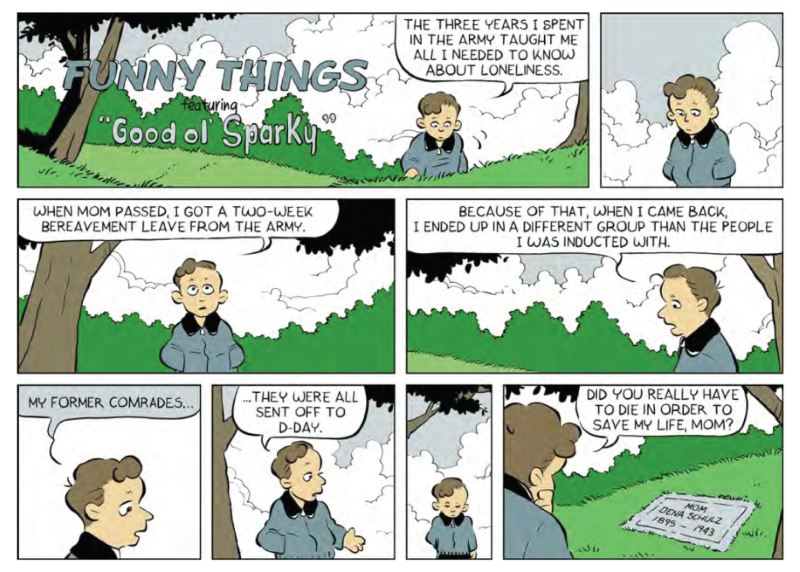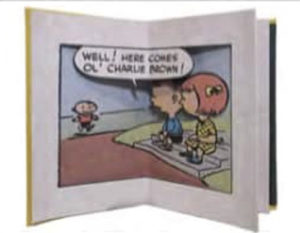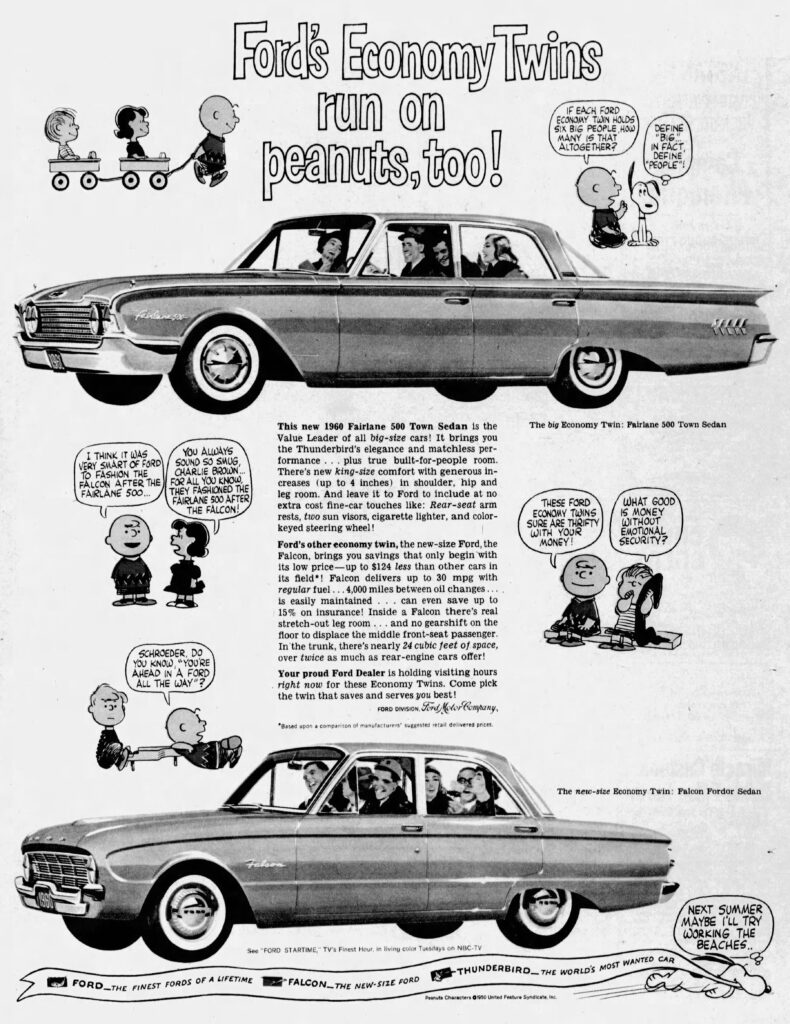The new book Funny Things: A Comic Strip Biography of Charles M. Schulz presents the story of the creator of the Peanuts comic strip, through over 400 pages of comic strips.
It’s a very interesting approach, as authors Luca Debus and Francesco Matteuzzi create comic strips that stick pretty snugly to the format, style, and tone that was used in Peanuts.

Ruben Bolling reviews Funny Things for Boing Boing.
… this is a pretty massive formal undertaking, as they have to tell the full story of Schulz’s life, professionally and personally, in tiny fragments, each ending in a Schulz-like punchline. It’s an interesting effect to read his life story in precisely the format that defined his creative life.
Charlie Brown Lived in a World of Mid-Century Modern Furniture

Peanuts gets mentioned in a Rain Noe/Core77 article about Mid-(20th)Century Modern classic furniture.
There’s a Peanuts cartoon strip from the ’50s [link added] that drives this point home. Charlie Brown and Peppermint Patty—quintessential middle-class American children—are sitting in a living room, listening to old records, including “Old Rockin’ Chair’s Got Me.”

Just as Charlie Brown had to learn to pick himself up from failure, so too did Mr. Schulz as a shy, small kid growing up in St. Paul, Minnesota. Mr. Schulz credits his high school art teacher, Minnette Paro, for spotting his talent early on and encouraging him to follow his own voice.
A black-and-white photo of Ms. Paro from 1940 sits in a glass case at the Minnesota History Center, one of more than 150 letters, photos, and memorabilia on view as part of a yearlong exhibit, “The Life and Art of Charles M. Schulz” in St. Paul.
It was in Li’l Folks that Schulz first used the name Charlie Brown for a character, and above you can also see an early version of Snoopy. In the sample, Schulz has already arrived at the basic lettering style he would use throughout his life. For both art and lettering, he used Esterbrook 914 pen nibs.
Charles’ lettering style was informed by the comic strips he enjoyed. His Esterbrook pen nib had a slight wedge tip, giving variation to the lettering strokes depending on the direction. I would guess he liked the lettering of Frank Engli on Terry and the Pirates, there are some similarities, though Schulz’s letters are softer and rounder.

I can’t resist showing another pen-pal gag, where Schulz was clearly having fun with the “bad” lettering, which isn’t really that bad.
Letterer Todd Klein goes in-depth on Charles M. Schulz’s lettering talents.
Peanuts gets a section in an article about the 1960s bestselling Ford Falcon.
Unique advertising may have also played a part.
Ford Motor Co. paid an annual licensing fee for exclusive rights to use characters from the comic strip Peanuts to hawk the Falcon from 1960 through 1965.

At the time, the Peanuts comic strip, which debuted in a mere seven newspapers in 1950, was exploding in popularity since Charles M. Schulz, the creator of the Peanuts comic strip, began licensing Hungerford Plastics Corp. to produce polyvinyl Peanuts figurines, in addition to a growing number of other licensing deals.
Larry Printz for The Detroit Bureau tells of the Falcon dominating 1960s car sales and Peanuts role in it.
Abrams Comicarts has put out a release with info on their upcoming graphic novel Here Comes Charlie Brown! A Peanuts Pop-up
…. and in doing so included images of the entire contents!

Nat Gertler at The Aaugh blog shares more news about the upcoming pop-up book of the first Peanuts comic strip.
The release also notes that this is the “first of a series, with subsequent volumes focusing on individual characters such as Snoopy, Lucy, Franklin, and the rest of the Peanuts gang in their most icon comic-strip appearances.”

Peanuts characters and comic strips © Peanuts Worldwide
